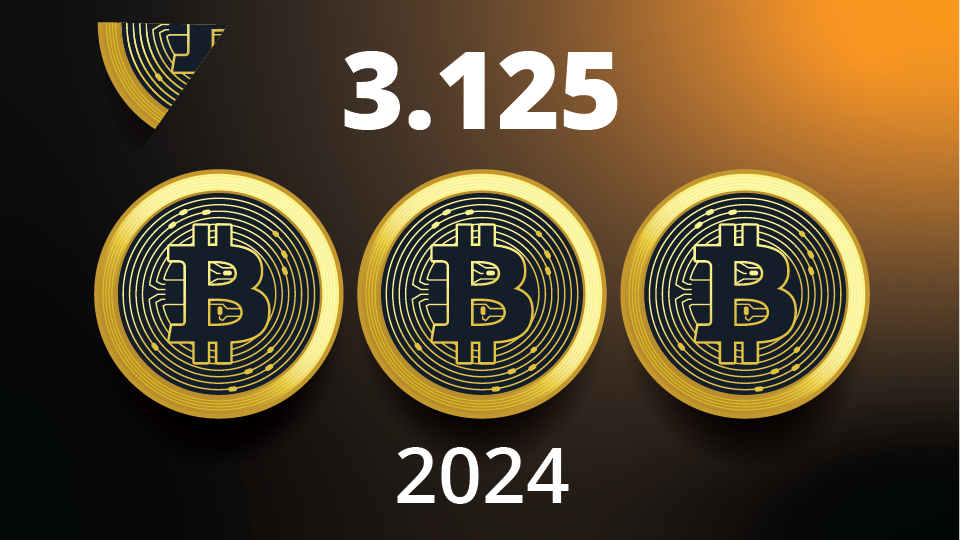Bitcoin Miners’ Excessive Comp Prompts Shareholder Concern
August 29, 2022
Read Time 8 MIN
Please note that VanEck has exposure to Bitcoin.
RIOT Shareholders Vote “No” to CEO’s Comp Package
In the just-completed 2022 proxy season, shareholder opposition to directors rose again, particularly on the issue of executive compensation. Average voting opposition for executive compensation chairs, for example, rose to 7.29% in 2022 vs. 5.7% in 2021 and 3.8% in 2017.1 In addition, average support in nonbinding votes on compensation dipped below 90% for the first time since 2017.2 In particular, this most recent proxy season has sparked a debate regarding executive compensation in the digital assets community. The industry operates under a unique set of competing pressures between long-term performance and short-term volatility. These factors, in combination with its fast-moving, high-risk and high-growth nature, have resulted in a lack of consensus surrounding executive compensation for bitcoin mining companies—and some fireworks!
Ahead of RIOT Blockchain’s Annual General Meeting on July 27, the largest U.S. bitcoin miner by revenue faced opposition to two of the five proposals slated by management on its proxy voting ballot.3 Specifically, at least one of the major proxy advisory services companies recommended voting against management’s proposals for the Advisory Vote on Executive Compensation and amendments to the 2019 Equity Incentive Plan.
The Advisory Vote on Executive Compensation sought shareholder approval of a non-binding advisory vote on the company's executive pay package. Total pay for the five named executive officers was proposed, including $21.9M for the CEO and just under that ($21.3M) for the executive chairman. Even the lowest paid named executive, the general counsel, was set to receive $13.2M.
Notably, these substantial sums were tied to milestones and annual goals with multiple measurement windows, including a performance measurement period for long-term awards that was less than three years. The compensation plan also did not disclose performance-based short-term awards or relative metrics to evaluate performance, and the annual bonuses were left uncapped. Meanwhile the proposal request to amend the 2019 Equity Incentive Plan requested 10,000,000 shares, which is 8.57% of outstanding shares and would have potential dilution ramifications of 7.89%.4 Since VanEck owns shares of RIOT in our Digital Transformation ETF (DAPP) and Digital Assets Mining ETF (DAM)—7.73% and 7.50% of net assets, respectively, as of 8/24/2022—we voted on these actions. In the end, shareholders failed to approve the management proposal on executive compensation.
Examining Executive Compensation in the U.S. Bitcoin Mining Industry
Given that RIOT is the largest bitcoin miner in North America, we see the lack of consensus regarding executive compensation as an opportunity to examine this issue in the digital assets industry, as well as other industries more broadly. We first examined the executive pay components for RIOT mining and its peers in order to understand how executive compensation is handled in the digital assets community in the U.S. The peer group includes the next largest publicly traded bitcoin miners in the U.S., including Marathon, Core Scientific, Cipher Mining and CleanSpark.
Using data from Harvard Business School5 and Gallagher,6 we then compared the pay components from RIOT and its peers with the energy and IT industries in the U.S. as well as the Russell 3000. We chose energy and IT as they are the industries that digital assets are most often compared to, while the Russell 3000 provides a benchmark for the entire U.S. stock market. Compensation factors were analyzed across the named executive officers (NEOs) for companies, which include the chief executive officer (CEO), chief financial officer (CFO), and the three most highly compensated executive officers for a company, in order to provide an accurate analysis of executive compensation.7
Total Direct Compensation Higher for Bitcoin Miners
First, we compared the following compensation factors: the base salary, annual bonus, stock options, total long-term incentives (LTI, which includes stock options and other factors) and total direct compensation.8
Our analysis reveals that RIOT and its peer group granted enormous NEO awards last year relative to the standard for the energy and IT industries as well as the Russell 3000. While the salary figures for RIOT and its peers were lower than its benchmarks, the total long-term incentives awarded were significantly higher, which contributed to much higher NEO total direct compensation. These more excessive executive compensation practices (amongst RIOT and its peers) might lead to pressure on peer companies in the digital assets industry to provide similarly large awards, in the absence of shareholder pushback.
Compensation Factors for NEOs – Median
Sources: Gallagher, DEF14As (2022). The median compensation factors for NEOs for RIOT and its peers compared to the energy and IT industries as well as the Russell 3000.
Miners Favor Variable Compensation Over Fixed
Our analysis reveals that executive compensation for RIOT and its peers includes variable compensation as a higher share of total compensation relative to the energy and IT industries as well as the market as a whole. This relatively high variable component lessens the blow of the outsized overall compensation, in our view.
| Base Salary (%) | Annual Bonus (%) | Total LTI (%)9 | |
| R3000 | 19 | 19 | 63 |
| Energy | 20 | 18 | 63 |
| IT | 13 | 11 | 76 |
| RIOT and Peers | 1 | 3 | 96 |
Sources: Gallagher, DEF14As (2022). The average share of base salary, annual bonus and total LTI for NEO compensation for RIOT and its peers compared to the energy and IT industries as well as the Russell 3000.
Short-term Compensation Common Among Miners
Our analysis reveals that RIOT and its peers include a significant level of short-term awards, which may be higher than the norm for the energy and IT industries.
All but one of the companies in the bitcoin mining peer group included as-achieved equity vesting for CEOs, which distributes special equity awards as soon as a goal is achieved. Further, the total time horizon for time-vesting awards (without performance conditions) were all within three years for these companies, compared to the three-year floor that is all but the norm in the U.S. market. Grants with short vesting periods and without features like minimum vesting requirements for as-achieved performance criteria can be less effective for long-term retention. Especially given the size of these awards, the short vesting periods may raise concerns for this peer group in spite of the industry’s unique contours.
| RIOT | MARA | CORZ | CIFR | CLSK | |
| CEO Special Equity Award | $19.3M | $219.8M | $160.7M | $102.4M | $11.6M* |
| As-achieved equity vesting | Yes | Yes | N/A; time-based | Yes | Yes |
| Time-vesting periods | 1 year | 9 months** | 4 years | 3 years | 1 to 3 years |
* Includes regular annual equity. Specific award values and grant dates are not provided. Excludes $2.5M in special cash awards.
** New CFO received a three-year grant in 2022 as an Initial Executive Award.
Sources: DEF14As (2022), annual reports (2021). Short term compensation factors for RIOT and peers.
Miners Executive Comp Yields More Equity Than Cash
Our analysis reveals that RIOT management and its peers will receive a higher share of equity vs. cash, compared to the energy and IT industries. While high proportions of equity-based pay are a favorable feature in many contexts, the structure of the grants, the time periods involved and the level of resultant dilution all contribute to a less rosy picture.
| Equity (%) | Cash (%) | |
| Energy | 68 | 32 |
| IT | 71 | 29 |
| RIOT and Peers | 94 | 6 |
Sources: Harvard Business Review, DEF14As (2022). The average share of equity vs cash components for NEOs for RIOT and its peers compared to the energy and IT industries.
Insights from Our Analysis
Overall, the factors analyzed reveal some risky behavior for RIOT and its peers with respect to compensation.
On the other hand, the unfavorable market conditions provide more context for changes made to executive compensation. The stock prices for the largest bitcoin mining companies are down an average of 84% from their peak as the U.S. market cap for crypto has fallen sharply in the last year.10 It is not unusual to reset options pricing during volatile market conditions in order to protect employees from market forces that are outside of the company’s control. Whether the awards are best designed to keep steady hands at the helm of these innovative companies in a less favorable or more volatile market is a fair question.
Further, it is common for companies to emphasize short-term awards when they want to encourage aggressive adaptability. Many fast-growing firms provide high compensation relative to the broader industry and especially relative to more established business lines. After all, there are fewer executives that are adept in navigating the intricacies of digital assets than there are business leaders that can manage traditional manufacturing operations. Since the digital assets industry is nascent and fast-evolving, these short-term awards may be more qualified than one might perceive at first-glance. Still, seeing eight-to-nine figure sums for the leaders of firms that have yet to make a profit may be discomforting in any industry.
Thus, in the case of RIOT, shareholders did not approve the Advisory Vote on Executive Compensation at the Annual General Meeting held on July 27, whereas the amendments to the 2019 Equity Incentive Plan were approved in a binding vote.
The number of shareholder proposals surged in the 2022 proxy season, continuing the effects of the change in administration at the SEC, and the issuance of the Staff Legal Bulletin No. 14L (SBL 14L) in November 2021, which made the exclusion of shareholder proposals more difficult for companies. The number of such proposals increased by 8% from 2021,11 which is the highest number of shareholder proposals since 2016.
Reflecting the heightened awareness of bitcoin mining’s environmental impact (both real and imagined), we would expect anti-crypto forces to mobilize shareholder proposals to target executive compensation and other governance issues should they be out-of-whack with corporate norms. No doubt such developments would contribute to differences in equity multiples for these firms. We look forward to engaging further on this topic.
To receive more Digital Assets insights, sign up in our subscription center.
Related Topics
Related Insights
Important Disclosures
The Russell 3000 Index tracks the performance of the 3,000 largest U.S.-traded stocks.
The information herein represents the opinion of the author(s), but not necessarily those of VanEck or its employees. The cryptocurrencies discussed in this material may not be appropriate for all investors. The appropriateness of a particular investment or strategy will depend on an investor’s individual circumstances and objectives.
This material has been prepared for informational purposes only and is not an offer to buy or sell or a solicitation of any offer to buy or sell any cryptocurrencies, or to participate in any trading strategy. Past performance is no guarantee of future results.
Certain statements contained herein may constitute projections, forecasts and other forward looking statements, which do not reflect actual results, are valid as of the date of this communication and subject to change without notice. Information provided by third party sources are believed to be reliable and have not been independently verified for accuracy or completeness and cannot be guaranteed. VanEck does not guarantee the accuracy of third party data. References to specific securities and their issuers or sectors are for illustrative purposes only.
The Funds will not invest in digital assets (including cryptocurrencies) (i) directly or (ii) indirectly through the use of digital asset derivatives. The Funds also will not invest in initial coin offerings. Therefore the Funds are not expected to track the price movement of any digital asset.
Investors in the Funds should be willing to accept a high degree of volatility in the price of the Fund’s Shares and the possibility of significant losses. An investment in the Funds involves a substantial degree of risk. An investment in the Funds is not a deposit with a bank and is not insured or guaranteed by the Federal Deposit Insurance Corporation or any other government agency. Therefore, you should consider carefully various risks before investing in the Funds, each of which could significantly and adversely affect the value of an investment in the Funds.
An investment in the Funds may be subject to risks which include, among others, risks related to investing in digital transformation companies, investing in equity securities, Canadian, Chinese and European issuers, small- and medium-capitalization companies, information technology and financials sectors, foreign securities, market, operational, index tracking, authorized participant concentration, new fund, absence of prior active market, trading issues, passive management, fund shares trading, premium/discount and liquidity of fund shares, non-diversified and concentration risks which may make these investments volatile in price or difficult to trade. Small- and medium-capitalization companies may be subject to elevated risks.
The technology relating to digital assets, including blockchain, is new and developing and the risks associated with digital assets may not fully emerge until the technology is widely used. Digital asset technologies are used by companies to optimize their business practices, whether by using the technology within their business or operating business lines involved in the operation of the technology. The cryptographic keys necessary to transact a digital asset may be subject to theft, loss, or destruction, which could adversely affect a company’s business or operations if it were dependent on the digital asset. There may be risks posed by the lack of regulation for digital assets and any future regulatory developments could affect the viability and expansion of the use of digital assets.
Digital asset miners and other hardware necessary for digital asset mining are subject to the risk of malfunction, technological obsolescence, the global supply chain issues and difficulty and cost in obtaining new hardware. Malfunctions and normal wear and tear will, at any point in time, cause a certain number of digital asset miners to be taken off-line for maintenance or repair. Any major digital asset miner malfunction could cause significant economic damage. The physical degradation of miners will require replacement of miners. Additionally, as technology evolves, there may be a need to acquire newer models of miners to remain competitive, which can be costly and may be in short supply. Given the long production period to manufacture and assemble digital asset miners and the current global semiconductor chip shortage, there can be no assurance that miners can acquire or maintain enough digital asset mining computers or replace parts on a cost-effective basis for efficient and profitable digital asset mining operations.
Cryptocurrency is a digital representation of value that functions as a medium of exchange, a unit of account, or a store of value, but it does not have legal tender status. Cryptocurrencies are sometimes exchanged for U.S. dollars or other currencies around the world, but they are not generally backed or supported by any government or central bank. Their value is completely derived by market forces of supply and demand, and they are more volatile than traditional currencies. The value of cryptocurrency may be derived from the continued willingness of market participants to exchange fiat currency for cryptocurrency, which may result in the potential for permanent and total loss of value of a particular cryptocurrency should the market for that cryptocurrency disappear.
Cryptocurrencies are not covered by either FDIC or SIPC insurance.
Investing in cryptocurrencies comes with a number of risks, including volatile market price swings or flash crashes, market manipulation, and cybersecurity risks. In addition, cryptocurrency markets and exchanges are not regulated with the same controls or customer protections available in equity, option, futures, or foreign exchange investing. There is no assurance that a person who accepts a cryptocurrency as payment today will continue to do so in the future.
The features, functions, characteristics, operation, use and other properties of the specific cryptocurrency may be complex, technical, or difficult to understand or evaluate. The cryptocurrency may be vulnerable to attacks on the security, integrity or operation, including attacks using computing power sufficient to overwhelm the normal operation of the cryptocurrency’s blockchain or other underlying technology. Some cryptocurrency transactions will be deemed to be made when recorded on a public ledger, which is not necessarily the date or time that a transaction may have been initiated.
- Investors must have the financial ability, sophistication and willingness to bear the risks of an investment and a potential total loss of their entire investment in cryptocurrency.
- An investment in cryptocurrency is not suitable or desirable for all investors.
- Cryptocurrency has limited operating history or performance.
- Fees and expenses associated with a cryptocurrency investment may be substantial.
There may be risks posed by the lack of regulation for cryptocurrencies and any future regulatory developments could affect the viability and expansion of the use of cryptocurrencies. Investors should conduct extensive research before investing in cryptocurrencies. Past performance is not a guarantee of future results.
1 Four key takeaways from the 2022 proxy season | EY - US
3 Riot Blockchain, Inc. 2022 Definitive Proxy Statement DEF 14A (sec.report)
4 GlassLewis.
5 Data reflects the average compensation of the five highest paid executives at each of the companies in the Russell3000. Data is sourced from FW Cook proprietary research.
6 Data reflects the compensation of the named executive officers in the Russell 3000 (n=2,848) or all of the companies of the energy (n=102) or IT (n=369) sectors in the Russell 3000. Data used is the median from 2016-2020.
7 https://sec.report/glossary/Named-Executive-Officers
8 Note that these are a subset of compensation factors that were analyzed and do not encompass all of the compensation factors that make up total direct compensation (and will not add up as such).
9 Figures may not sum to 100% due to rounding.
10 Bloomberg, as of 8/23/22.
11 Shareholder Proposal Developments During the 2022 Proxy Season - Gibson Dunn
Information provided by Van Eck is not intended to be, nor should it be construed as financial, tax or legal advice. It is not a recommendation to buy or sell an interest in cryptocurrencies.
Investing involves substantial risk and high volatility, including possible loss of principal. An investor should consider the investment objective, risks, charges and expenses of a Fund carefully before investing. To obtain a prospectus and summary prospectus, which contain this and other information, call 800.826.2333 or visit vaneck.com. Please read the prospectus and summary prospectus carefully before investing.
© Van Eck Securities Corporation, Distributor, a wholly owned subsidiary of Van Eck Associates Corporation.
Related Funds
Important Disclosures
The Russell 3000 Index tracks the performance of the 3,000 largest U.S.-traded stocks.
The information herein represents the opinion of the author(s), but not necessarily those of VanEck or its employees. The cryptocurrencies discussed in this material may not be appropriate for all investors. The appropriateness of a particular investment or strategy will depend on an investor’s individual circumstances and objectives.
This material has been prepared for informational purposes only and is not an offer to buy or sell or a solicitation of any offer to buy or sell any cryptocurrencies, or to participate in any trading strategy. Past performance is no guarantee of future results.
Certain statements contained herein may constitute projections, forecasts and other forward looking statements, which do not reflect actual results, are valid as of the date of this communication and subject to change without notice. Information provided by third party sources are believed to be reliable and have not been independently verified for accuracy or completeness and cannot be guaranteed. VanEck does not guarantee the accuracy of third party data. References to specific securities and their issuers or sectors are for illustrative purposes only.
The Funds will not invest in digital assets (including cryptocurrencies) (i) directly or (ii) indirectly through the use of digital asset derivatives. The Funds also will not invest in initial coin offerings. Therefore the Funds are not expected to track the price movement of any digital asset.
Investors in the Funds should be willing to accept a high degree of volatility in the price of the Fund’s Shares and the possibility of significant losses. An investment in the Funds involves a substantial degree of risk. An investment in the Funds is not a deposit with a bank and is not insured or guaranteed by the Federal Deposit Insurance Corporation or any other government agency. Therefore, you should consider carefully various risks before investing in the Funds, each of which could significantly and adversely affect the value of an investment in the Funds.
An investment in the Funds may be subject to risks which include, among others, risks related to investing in digital transformation companies, investing in equity securities, Canadian, Chinese and European issuers, small- and medium-capitalization companies, information technology and financials sectors, foreign securities, market, operational, index tracking, authorized participant concentration, new fund, absence of prior active market, trading issues, passive management, fund shares trading, premium/discount and liquidity of fund shares, non-diversified and concentration risks which may make these investments volatile in price or difficult to trade. Small- and medium-capitalization companies may be subject to elevated risks.
The technology relating to digital assets, including blockchain, is new and developing and the risks associated with digital assets may not fully emerge until the technology is widely used. Digital asset technologies are used by companies to optimize their business practices, whether by using the technology within their business or operating business lines involved in the operation of the technology. The cryptographic keys necessary to transact a digital asset may be subject to theft, loss, or destruction, which could adversely affect a company’s business or operations if it were dependent on the digital asset. There may be risks posed by the lack of regulation for digital assets and any future regulatory developments could affect the viability and expansion of the use of digital assets.
Digital asset miners and other hardware necessary for digital asset mining are subject to the risk of malfunction, technological obsolescence, the global supply chain issues and difficulty and cost in obtaining new hardware. Malfunctions and normal wear and tear will, at any point in time, cause a certain number of digital asset miners to be taken off-line for maintenance or repair. Any major digital asset miner malfunction could cause significant economic damage. The physical degradation of miners will require replacement of miners. Additionally, as technology evolves, there may be a need to acquire newer models of miners to remain competitive, which can be costly and may be in short supply. Given the long production period to manufacture and assemble digital asset miners and the current global semiconductor chip shortage, there can be no assurance that miners can acquire or maintain enough digital asset mining computers or replace parts on a cost-effective basis for efficient and profitable digital asset mining operations.
Cryptocurrency is a digital representation of value that functions as a medium of exchange, a unit of account, or a store of value, but it does not have legal tender status. Cryptocurrencies are sometimes exchanged for U.S. dollars or other currencies around the world, but they are not generally backed or supported by any government or central bank. Their value is completely derived by market forces of supply and demand, and they are more volatile than traditional currencies. The value of cryptocurrency may be derived from the continued willingness of market participants to exchange fiat currency for cryptocurrency, which may result in the potential for permanent and total loss of value of a particular cryptocurrency should the market for that cryptocurrency disappear.
Cryptocurrencies are not covered by either FDIC or SIPC insurance.
Investing in cryptocurrencies comes with a number of risks, including volatile market price swings or flash crashes, market manipulation, and cybersecurity risks. In addition, cryptocurrency markets and exchanges are not regulated with the same controls or customer protections available in equity, option, futures, or foreign exchange investing. There is no assurance that a person who accepts a cryptocurrency as payment today will continue to do so in the future.
The features, functions, characteristics, operation, use and other properties of the specific cryptocurrency may be complex, technical, or difficult to understand or evaluate. The cryptocurrency may be vulnerable to attacks on the security, integrity or operation, including attacks using computing power sufficient to overwhelm the normal operation of the cryptocurrency’s blockchain or other underlying technology. Some cryptocurrency transactions will be deemed to be made when recorded on a public ledger, which is not necessarily the date or time that a transaction may have been initiated.
- Investors must have the financial ability, sophistication and willingness to bear the risks of an investment and a potential total loss of their entire investment in cryptocurrency.
- An investment in cryptocurrency is not suitable or desirable for all investors.
- Cryptocurrency has limited operating history or performance.
- Fees and expenses associated with a cryptocurrency investment may be substantial.
There may be risks posed by the lack of regulation for cryptocurrencies and any future regulatory developments could affect the viability and expansion of the use of cryptocurrencies. Investors should conduct extensive research before investing in cryptocurrencies. Past performance is not a guarantee of future results.
1 Four key takeaways from the 2022 proxy season | EY - US
3 Riot Blockchain, Inc. 2022 Definitive Proxy Statement DEF 14A (sec.report)
4 GlassLewis.
5 Data reflects the average compensation of the five highest paid executives at each of the companies in the Russell3000. Data is sourced from FW Cook proprietary research.
6 Data reflects the compensation of the named executive officers in the Russell 3000 (n=2,848) or all of the companies of the energy (n=102) or IT (n=369) sectors in the Russell 3000. Data used is the median from 2016-2020.
7 https://sec.report/glossary/Named-Executive-Officers
8 Note that these are a subset of compensation factors that were analyzed and do not encompass all of the compensation factors that make up total direct compensation (and will not add up as such).
9 Figures may not sum to 100% due to rounding.
10 Bloomberg, as of 8/23/22.
11 Shareholder Proposal Developments During the 2022 Proxy Season - Gibson Dunn
Information provided by Van Eck is not intended to be, nor should it be construed as financial, tax or legal advice. It is not a recommendation to buy or sell an interest in cryptocurrencies.
Investing involves substantial risk and high volatility, including possible loss of principal. An investor should consider the investment objective, risks, charges and expenses of a Fund carefully before investing. To obtain a prospectus and summary prospectus, which contain this and other information, call 800.826.2333 or visit vaneck.com. Please read the prospectus and summary prospectus carefully before investing.
© Van Eck Securities Corporation, Distributor, a wholly owned subsidiary of Van Eck Associates Corporation.




